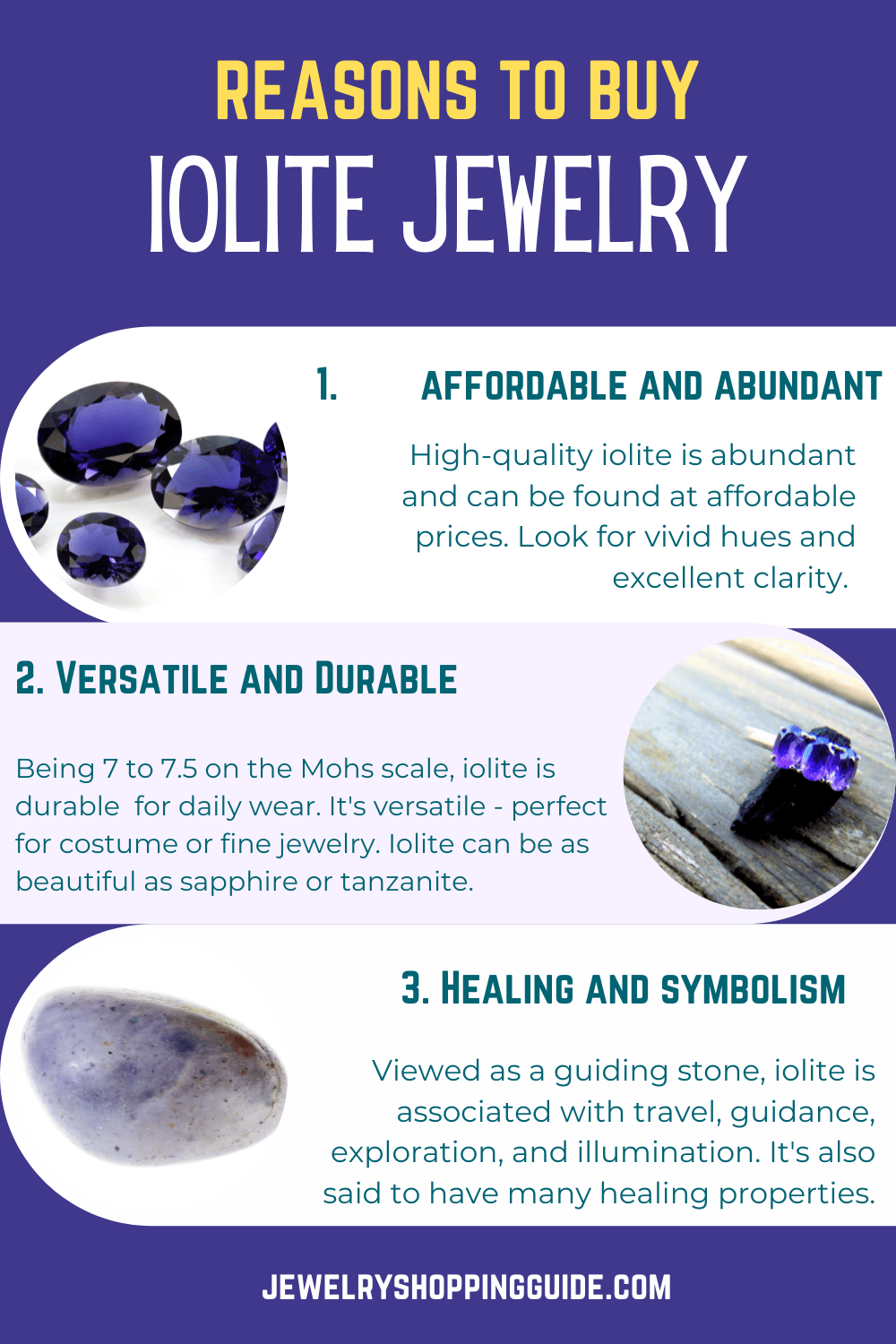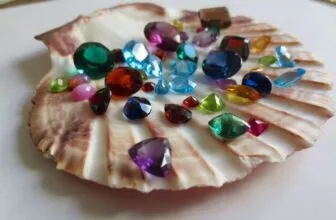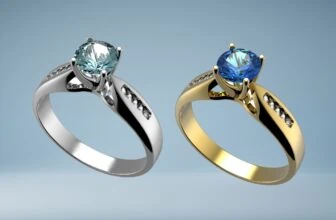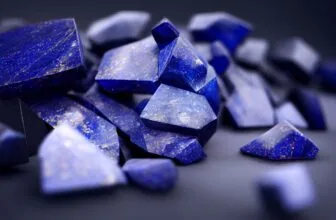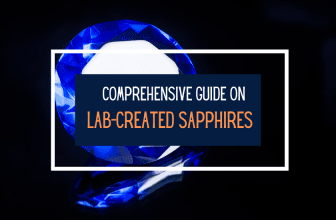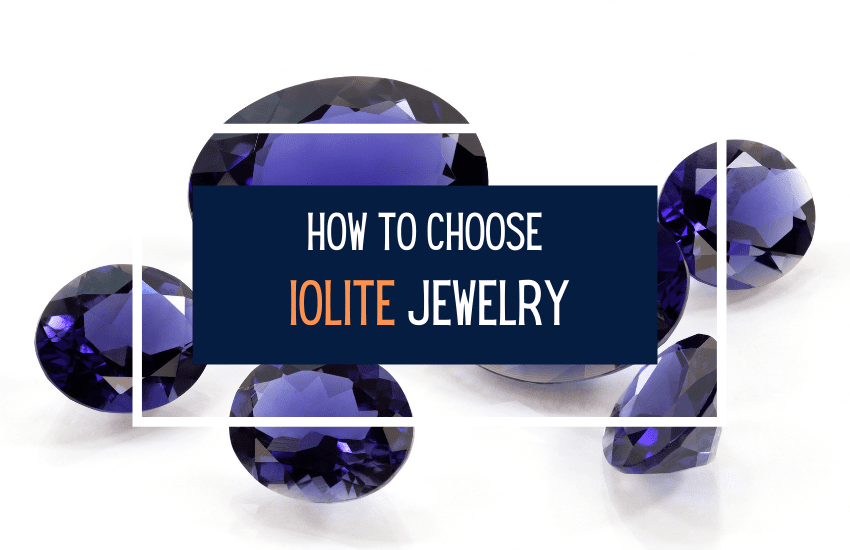
Table of Contents
Iolite is a fine blue gemstone that sparkles with life and color when touched by light. Iolite can be as beautiful as more valuable blue stones, such as sapphires and tanzanites, but because they’re found in abundance around the world they’re quite affordable. Here’s what to look out for when purchasing iolite gemstone jewelry.
What Is Iolite?
Although iolite has been used as a gemstone throughout history, it was only officially named in 1912. The name comes from Greek ‘Ios’, meaning violet, referencing the color of the stone.
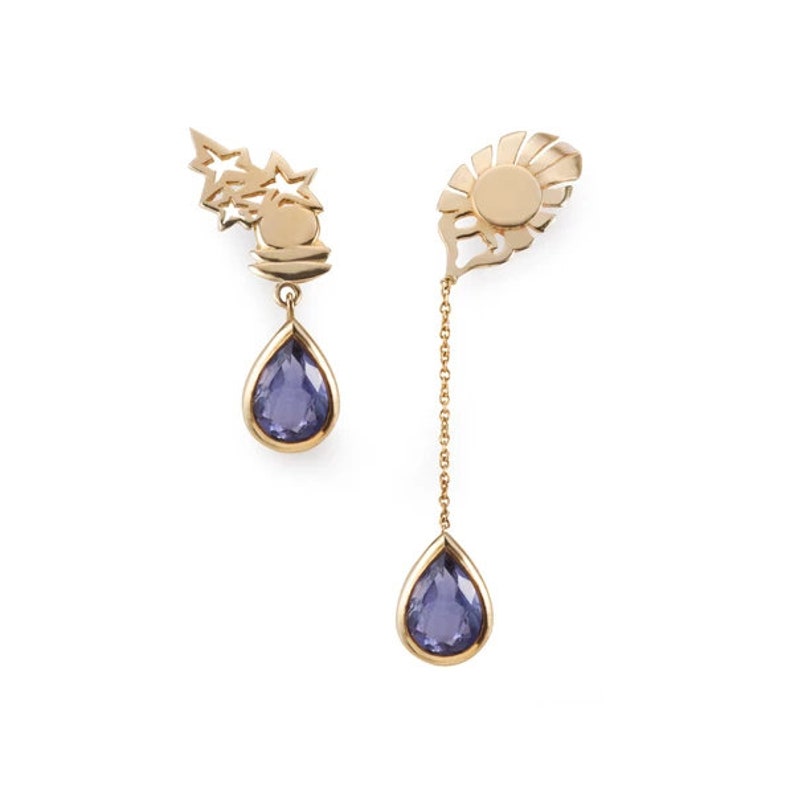
Iolite has also been called Water Sapphire, due to its unique bluish hue. Iolite used to be called the Viking Compass Stone. The Vikings used to use thin slices of iolite as a light polarizer to help them navigate on their journeys. This may be why blue iolite is said to carry the spirit of a journey, of dreams and explorations.
One special attribute of iolite is its strong pleochroism. This is its tendency to exhibit different colors based on the position in which it is viewed from.
Evaluating Iolite Using the 4cs
When buying iolite, you can use the 4Cs (cut, color, clarity, carat weight) to help you evaluate the stone.
1. Choosing Iolite Color
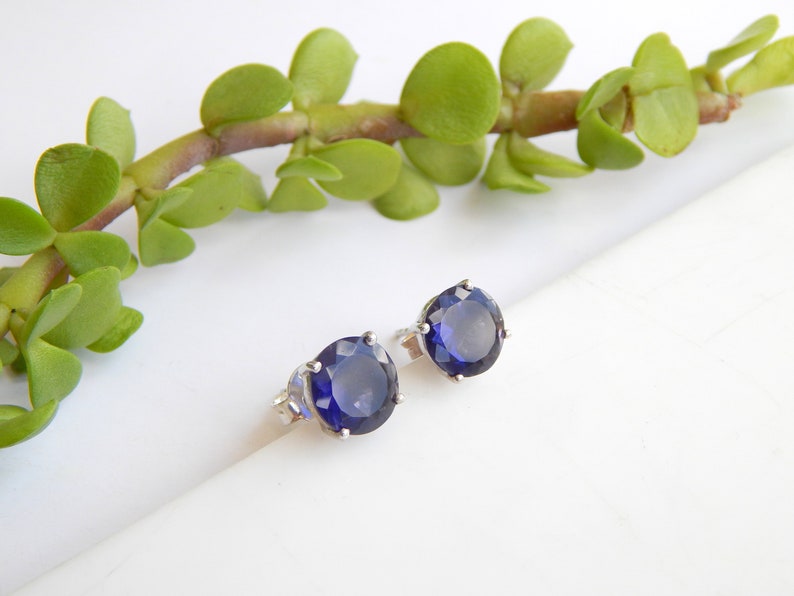
Iolite is primarily a blue gemstone. You can find it in many shades of blue, from light to dark. The most valuable and highly priced iolite are stones with saturated, vivid blue hues.
At its deepest and most vivid, high-quality iolite can challenge the beauty of expensive stones like sapphires and tanzanites. It also exhibits a purplish tint, which complements the primary color of the stone beautifully.
Because of iolite’s strong pleochroism, the color of the stone can change depending on the angle you are viewing it from. From certain angles, it can appear grey and from others, it can appear golden, brownish, or even transparent. Some sections may have very light colors and others may show a dark color.
2. Choosing Iolite Cut
Cutting iolite is extremely challenging but is also one of the most important steps in bringing out the beauty of iolite’s hue. There are two main reasons cutting iolite is challenging:
- Iolite should be cut to ensure that the blue hue of the stone appears when viewed face up, while the greyish, pale yellow, or brownish pleochroic colors only make an appearance when it’s held and turned. The stone can produce the strongest pleochroism only if it is properly cut.
- Due to iolite’s distinctive cleavage and brittle nature, it can easily fracture or break. One wrong move by the cutter and the stone loses its entire beauty and worth.
Iolite is cut into all the traditional shapes including square, round, oval and cushion. The stone can be faceted to enhance light performance and to add texture and depth to the piece, like these iolite dangle earrings.
They can also be cut en cabochon to highlight the smoothness and color, like this unique iolite pendant in yellow gold.
As iolite is increasing in demand, jewelry designers are attempting to get creative with the shape of the stone and have more options for shoppers.
3. Choosing Iolite Clarity
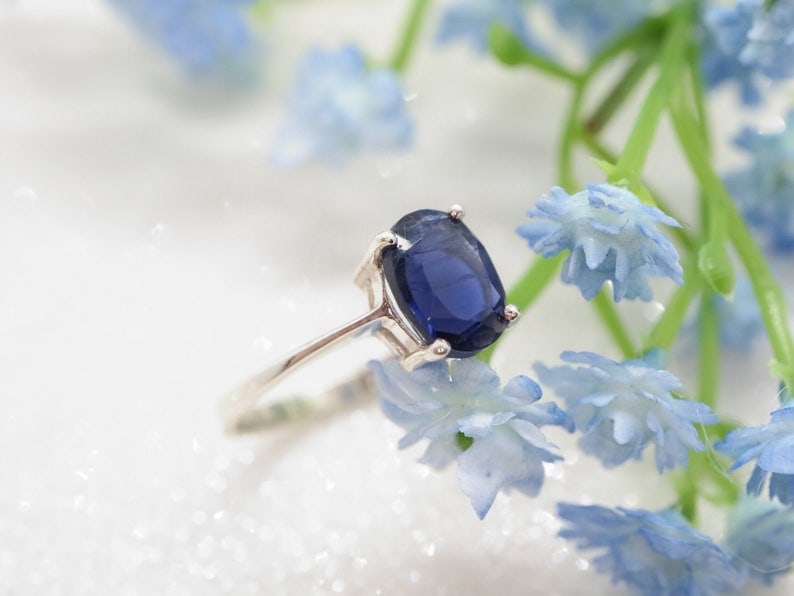
Clarity is an important factor for iolite. Generally, iolite is a transparent and translucent stone with relatively few inclusions. If there happen to be inclusions, they are usually long and tubular-looking that run parallel within the stone.
Iolite can also contain metallic, plate-type inclusions. If the inclusions are brownish or red in color, the stone is marked as bloodshot. These inclusions can create a sparkly effect when cut well. Again, it depends on the expertise of the cutter and if they are able to turn a flaw into something to flaunt.
Larger iolite gemstones, those upwards of 8 carats, are generally not eye clean.
4. Iolite Carat Weight
Iolite can be found in medium sizes, ranging between 1 carat to 10 carats. Iolites between 1-5 carats is ideal for jewelry and because iolite is an inexpensive stone, the prices will often be affordable.
Extra fine stones of 1 to 5 carats may cost upwards of $60 per carat. Larger stones from 5 to 10 carats will be more expensive, costing about $100 to $150 per carat.
High quality iolite gems above 8 carats, with good clarity, are rare and can be expensive.
Iolite Jewelry and Metals
Iolite is available as rings, bracelets, pendants and necklaces. Because it is a relatively hard stone (7.0 – 7.5 on the Mohs scale) it is suitable for everyday wear.
Iolite goes well with most popular metals for jewelry, including white gold, sterling silver, platinum, rose gold or yellow gold.
Iolite jewelry paired with silver-colored metals exhibit a dazzling, modern and trendy look.
Iolites paired with yellow and rose gold have a classy and vintage look. However, with yellow/rose gold, make sure that the iolite is of high quality and does not have yellowish tints on the surface, as this can be emphasized by the metal.
You can also find iolite with inexpensive metals. As the gemstone is affordable, jewelers sometimes use polished brass or copper to keep the price of the finished piece low.
Gemstones That Go Well with Iolite
Iolite combines well with other gemstones such as amethyst, peridot, topaz, quartz, amber, and diamonds. Generally, white diamonds and blue iolite make the best match, as the sparkle of diamonds brings out the color of iolite.
Iolite Engagement Rings
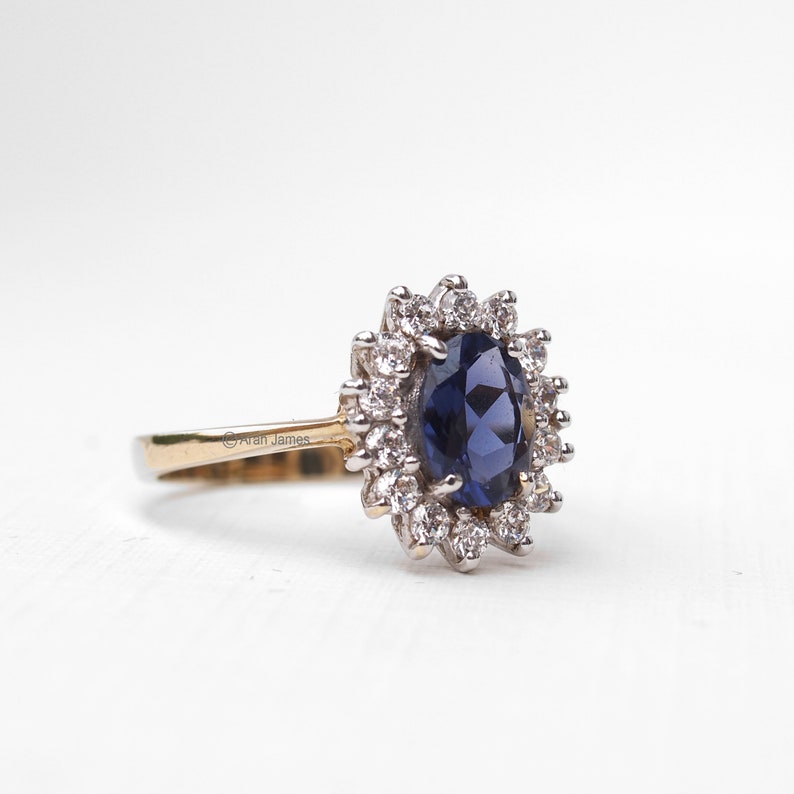
Iolite is increasing in demand as an engagement ring, as it makes for an excellent alternative to blue sapphire and tanzanite.
When choosing a gemstone for an engagement ring, it’s important to consider its durability. Iolite is hardy enough for daily wear but requires care as the stone can be prone to breakage. Choose a protective setting like a bezel or a halo setting to add that extra layer of protection for the iolite.
As with any other gemstone, there are always varying levels of quality when choosing iolite. Choose iolite that has deep blue or violet color and a top-quality cut. Avoid low-quality stones with faint blue or grey hues with yellowish flashes.
Iolite vs. Tanzanite
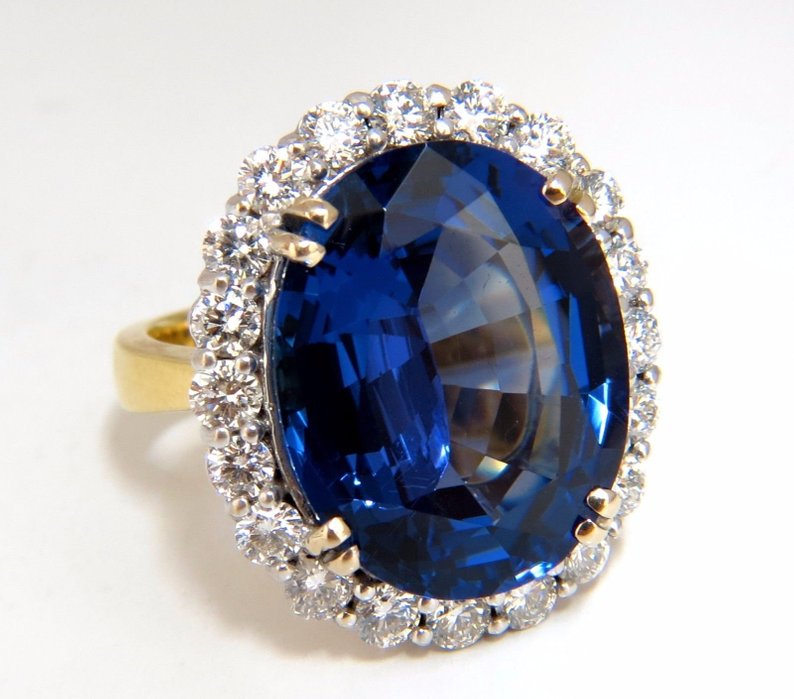
Iolite has a similar blue color to that of the dazzling but under-priced tanzanite gemstone. In fact, when tanzanite was discovered, it was initially believed to be iolite.
However, tanzanite is much rarer than iolite. In fact, it’s one of the rarest gemstones and is more highly priced. Tanzanite is also more brilliant than an iolite stone and has a greater depth that iolite just doesn’t seem to have. Iolite, on the other hand, is more durable than tanzanite and is much harder.
If a tanzanite is over your budget, you could easily go for an iolite gemstone without much difference.
Carrying for Iolite Jewelry
Iolite is a hard stone but can easily fracture. This happens if pressure is applied to the stone at certain angles. This is because iolite has cleavage that runs in one direction, which refers to the tendency to break along fault lines. Very hard knocks or rough daily wear can cause the stone to crack or even chip off.
Never use ultrasonic or steam cleaners for iolite jewelry. It should be cleaned with a mild soap and a soft brush.
Iolite jewelry, especially rings, shouldn’t be worn during vigorous outdoor activities. Don’t expose the stone to harsh chemicals, and store iolite away from heat and sunlight.
Iolite Enhancements and Imitations
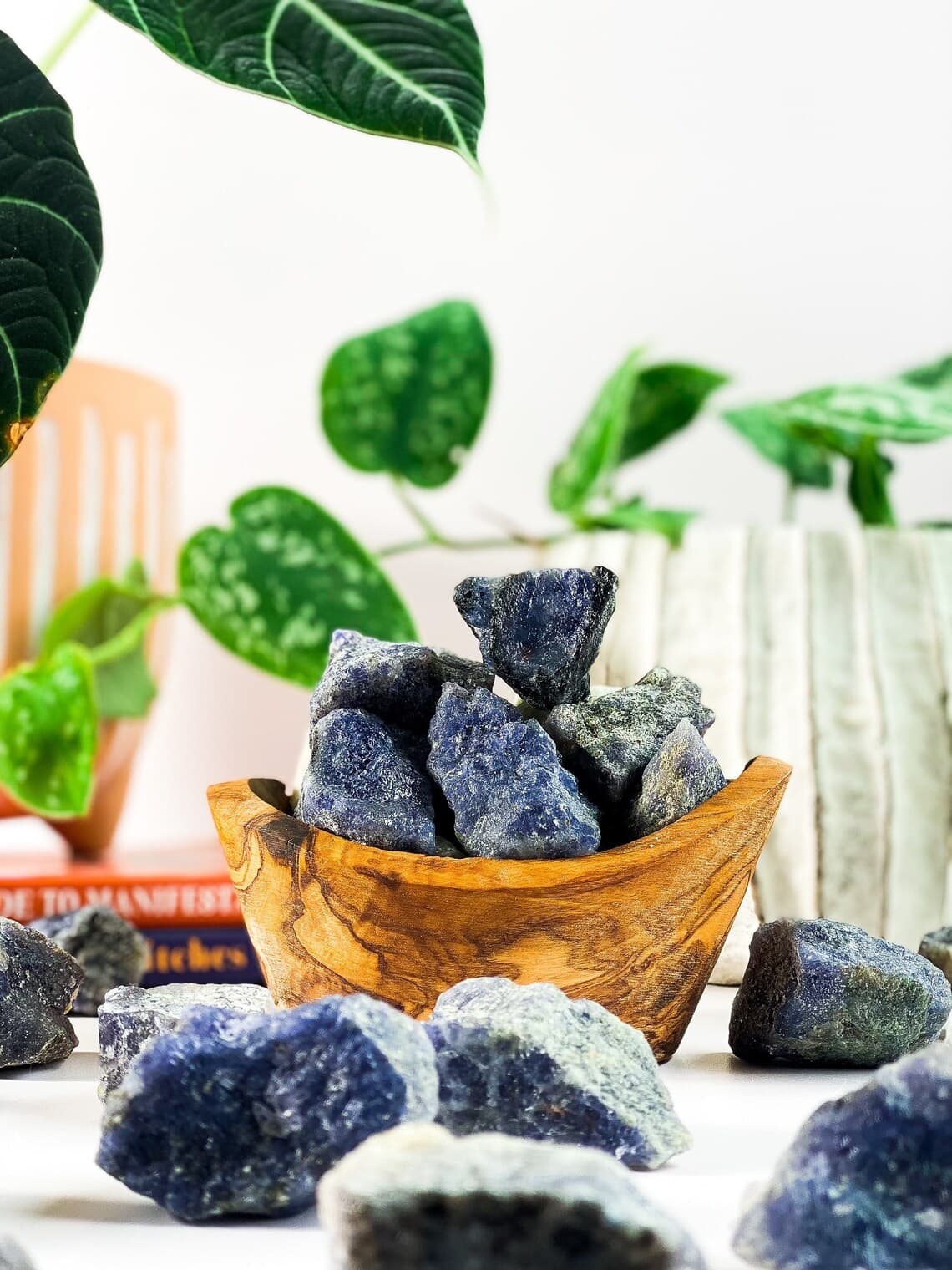
Iolite is a naturally beautiful stone. There are no known enhancements and even the highest quality iolite will be natural.
Most other blue gems are treated and enhanced to maximize their color, but not iolite. Shoppers sometimes prefer iolite for this reason.
In terms of imitations, you may come across glass imitations. Check to see the depth of color and the hardness of the stone. Glass will easily scratch as it’s softer than iolite. However, because iolite is affordable, there aren’t many imitations on the market.
On the flip side, it’s common for iolite to be used as imitation of tanzanite.
Iolite Meaning and Symbolism
There are many beliefs and symbolism connected to iolite. Iolite is said to have both physical and emotional healing powers. It is believed that iolite helps a person to connect to the world. It makes the nerves stronger, prevents nightmares and insomnia. It soothes the emotion and calms a troubled mind.
The violet color is famous for removing fear from the heart and opening up the feelings of mystery, magic, and nobility.
The power of iolite motivates its wearer to accomplish great tasks and make dreams real.
Iolite’s darker shades offer honesty and lighter shades help to connect to the real world. The blue colors are thought to be dream crystals that improves the thinking abilities of the wearer.
Whether these beliefs are real or not, it adds to the allure of iolite and makes the stone even more interesting.
Iolite is viewed as a guiding stone, due to its connection with the Vikings who used it to help them on their journeys. Due to this, iolite is connected with travel, guidance, exploration, and illumination.
Where to Buy Iolite Jewelry
When buying online, ensure that you are buying from a top-rated vendor with a proven track record.
We recommend starting your search on Etsy or Amazon as these platforms have endless options to suit various budgets and styles.
Since every vendor on Etsy and Amazon have their own policies and rules, ensure that you’ve done your due diligence. Use the sites’ extensive rating and review sections to gauge the quality of each product.
Wrapping Up
Iolite as an affordable and abundant blue gemstone is perfect in use for jewelry. While it’s valued for its purported healing properties, it’s also an aesthetically pleasing gemstone that suits a range of styles, whether bohemian or more classic styles.
We don’t recommend iolite for engagement rings due to its softness, but even so, with proper maintenance and care, iolite can be chosen for engagement rings too. Check out the graphic below that recaps on the benefits of iolite.
